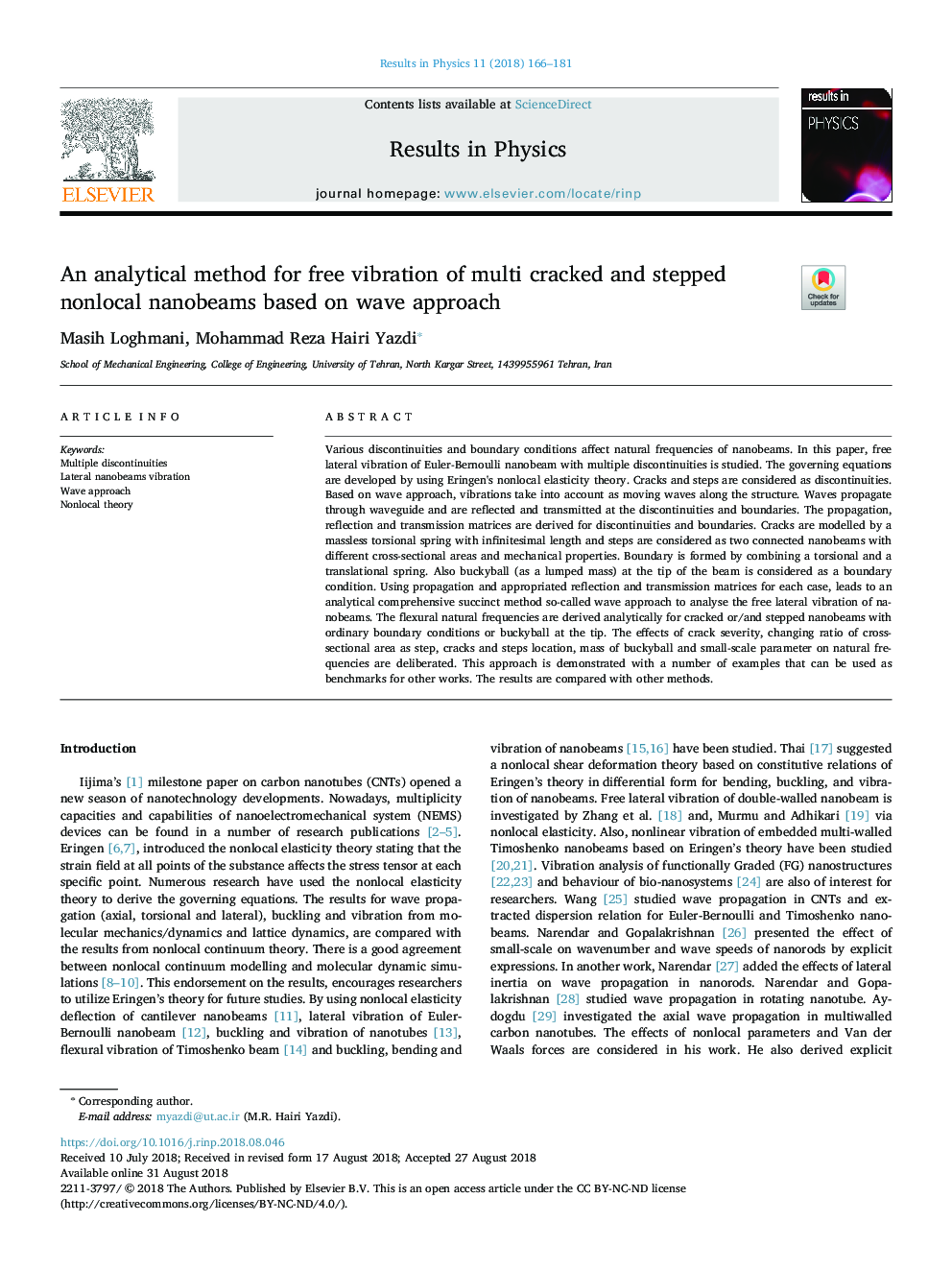| Article ID | Journal | Published Year | Pages | File Type |
|---|---|---|---|---|
| 10136922 | Results in Physics | 2018 | 16 Pages |
Abstract
Various discontinuities and boundary conditions affect natural frequencies of nanobeams. In this paper, free lateral vibration of Euler-Bernoulli nanobeam with multiple discontinuities is studied. The governing equations are developed by using Eringen's nonlocal elasticity theory. Cracks and steps are considered as discontinuities. Based on wave approach, vibrations take into account as moving waves along the structure. Waves propagate through waveguide and are reflected and transmitted at the discontinuities and boundaries. The propagation, reflection and transmission matrices are derived for discontinuities and boundaries. Cracks are modelled by a massless torsional spring with infinitesimal length and steps are considered as two connected nanobeams with different cross-sectional areas and mechanical properties. Boundary is formed by combining a torsional and a translational spring. Also buckyball (as a lumped mass) at the tip of the beam is considered as a boundary condition. Using propagation and appropriated reflection and transmission matrices for each case, leads to an analytical comprehensive succinct method so-called wave approach to analyse the free lateral vibration of nanobeams. The flexural natural frequencies are derived analytically for cracked or/and stepped nanobeams with ordinary boundary conditions or buckyball at the tip. The effects of crack severity, changing ratio of cross-sectional area as step, cracks and steps location, mass of buckyball and small-scale parameter on natural frequencies are deliberated. This approach is demonstrated with a number of examples that can be used as benchmarks for other works. The results are compared with other methods.
Keywords
Related Topics
Physical Sciences and Engineering
Physics and Astronomy
Physics and Astronomy (General)
Authors
Masih Loghmani, Mohammad Reza Hairi Yazdi,
